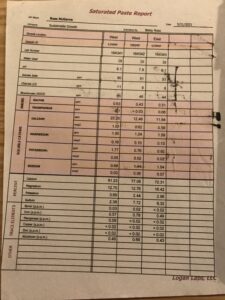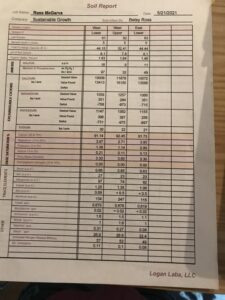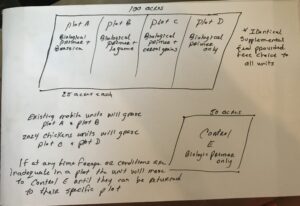Project Overview
Commodities
- Agronomic: cotton, wheat
- Animals: poultry
Practices
- Crop Production: cover crops, nutrient management
Proposal summary:
marginal food system increase. What we know: Multi-species grazing and cover cropping work to heal soil and increase farm income. What we want to know: What combination of cover crops and grazing meat birds will produce the most meat, increase soil fertility, and overall health, at the least cost.
cereal grains. Each plot will have a base seeding of Green Cover biological primer mix but then at planting the primer will be augmented with the test classification seeds. Example: Seeding rate of biological primer on our soils is approximately 100/lbs per acre. Each plot will have 80lbs/per acre of biological primer and 20lbs per acre of one of the three test
We have prototyped a mobile unit that is inexpensive and easily put into operation. We will add an additional unit that will allow us to take groups of 250 meat birds at a time through to harvest.
Project objectives from proposal:
We have decades of experience in managed grazing of multi-species and have witnessed, on very diverse operations, the benefits of controlled use and rest periods. Establishing the perennial pastures needed to support this grazing model has been our endeavor for the last three years and we are now in a position to increase grazing animal numbers. Chickens can harvest forage as effectively as ruminants however, the number of feet in a flock of 200+ birds can create negative impact if rotations do not happen very frequently. Our mobile unit design is easy to relocate and our moves are usually between 100- 300 yards every other day. We have experimented with duration effects and have found in drier weather we can stay in one location for up to 4 days. In extremely wet weather the equipment required to move the mobile units can do harm to the pasture so we increase the perimeter size of the chicken enclosure and wait for better conditions to relocate.
Managed correctly a 200+ bird unit can effectively graze and fertilize 7-12 acres per month, producing income generating
products while displacing chemical input costs.
For the purposes of this project we will keep each flock of separate and they will graze specific cover crops to help us determine the most effective combination of cover crop for meat production and soil health.
As the Plot Plan illustrates; we will begin grazing Plot A and Plot B with the existing flocks we have while brooding two
additional flocks for Plot C and Plot D. Each Plot will have specific cover crop species and data will be collected on
beginning (untreated) soil health, end-of-rotation soil health, meat production numbers specific to each plot and overall
observations.


